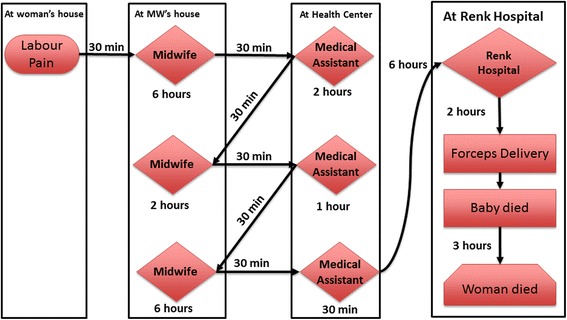Fig. 4.

Zigzagging referral pattern. She was living in a village 80 km south of Renk town. The labour pains started at 8:00 am. After six hours, the trained midwife advised her family to take her to the medical assistant in the village health centre. Family members lifted the pregnant woman onto a donkey-driven cart and went to the village’s medical assistant. When they arrived, her water broke. The medical assistant prescribed drugs and told them that she was in labour and that the midwife should deliver her straight away. He sent them back to the midwife for delivery. After spending three hours with the midwife without progress, the pregnant woman was exhausted. The midwife advised them to go back to the medical assistant. They spent most of the night going back and forth between a midwife and a medical assistant until the midwife insisted on the medical assistant referring them to Renk hospital. They were referred shortly before 4 am – 20 h after labour had started. The pregnant woman’s father-in-law sought transportation to Renk hospital. He negotiated with the petroleum company to help them to get to the hospital. He waited until the driver arrived at 6.30 am and by 7 am they were on the road to Renk. At 10:00 am they arrived at the maternity ward of Renk hospital. All attempts to induce labour in the hospital failed and forceps had to be used. The baby was stillborn. Three hours later the mother died (5JMD)
